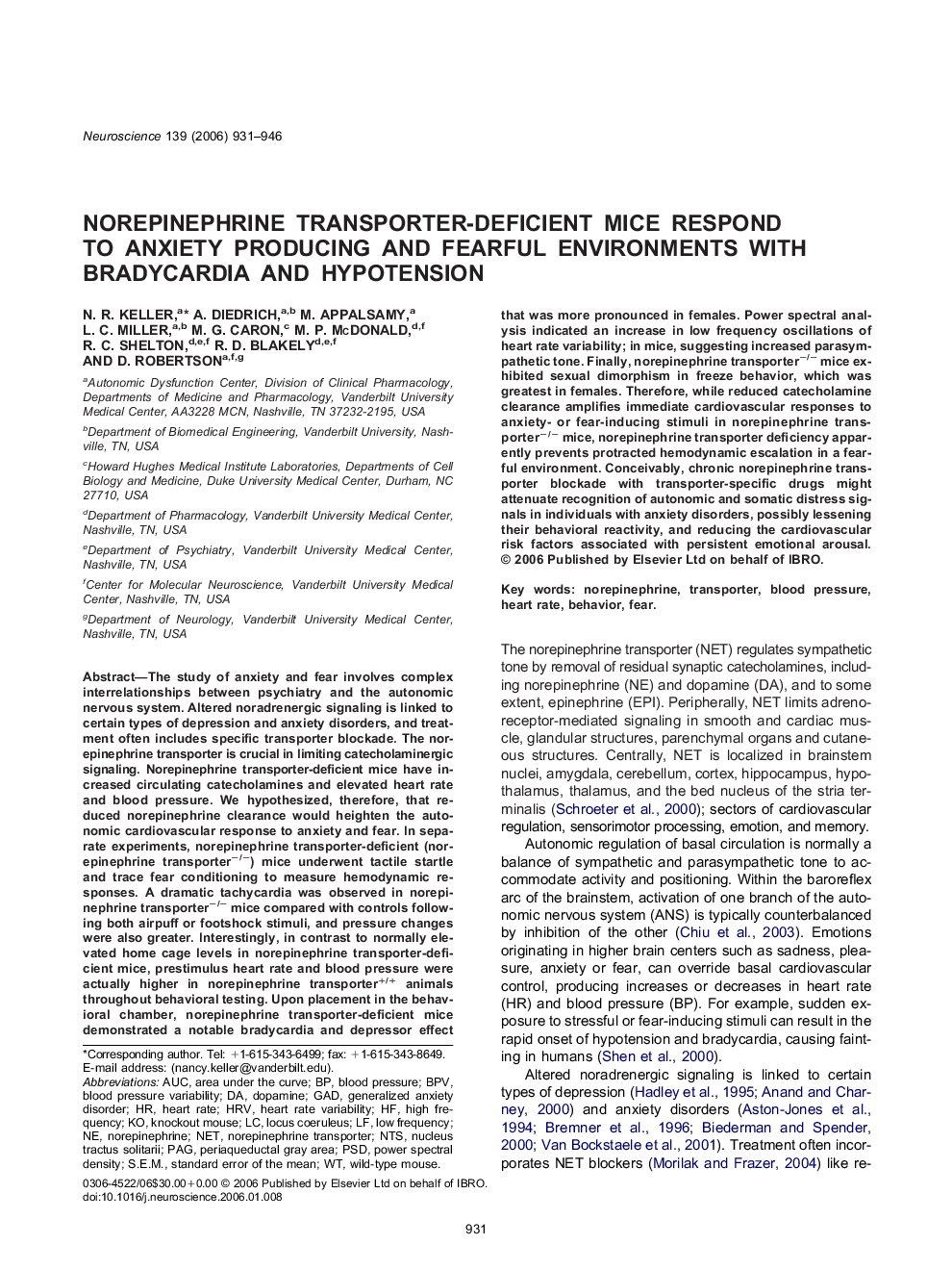| کد مقاله | کد نشریه | سال انتشار | مقاله انگلیسی | نسخه تمام متن |
|---|---|---|---|---|
| 4341923 | 1295850 | 2006 | 16 صفحه PDF | دانلود رایگان |

The study of anxiety and fear involves complex interrelationships between psychiatry and the autonomic nervous system. Altered noradrenergic signaling is linked to certain types of depression and anxiety disorders, and treatment often includes specific transporter blockade. The norepinephrine transporter is crucial in limiting catecholaminergic signaling. Norepinephrine transporter-deficient mice have increased circulating catecholamines and elevated heart rate and blood pressure. We hypothesized, therefore, that reduced norepinephrine clearance would heighten the autonomic cardiovascular response to anxiety and fear. In separate experiments, norepinephrine transporter-deficient (norepinephrine transporter−/−) mice underwent tactile startle and trace fear conditioning to measure hemodynamic responses. A dramatic tachycardia was observed in norepinephrine transporter−/− mice compared with controls following both airpuff or footshock stimuli, and pressure changes were also greater. Interestingly, in contrast to normally elevated home cage levels in norepinephrine transporter-deficient mice, prestimulus heart rate and blood pressure were actually higher in norepinephrine transporter+/+ animals throughout behavioral testing. Upon placement in the behavioral chamber, norepinephrine transporter-deficient mice demonstrated a notable bradycardia and depressor effect that was more pronounced in females. Power spectral analysis indicated an increase in low frequency oscillations of heart rate variability; in mice, suggesting increased parasympathetic tone. Finally, norepinephrine transporter−/− mice exhibited sexual dimorphism in freeze behavior, which was greatest in females. Therefore, while reduced catecholamine clearance amplifies immediate cardiovascular responses to anxiety- or fear-inducing stimuli in norepinephrine transporter−/− mice, norepinephrine transporter deficiency apparently prevents protracted hemodynamic escalation in a fearful environment. Conceivably, chronic norepinephrine transporter blockade with transporter-specific drugs might attenuate recognition of autonomic and somatic distress signals in individuals with anxiety disorders, possibly lessening their behavioral reactivity, and reducing the cardiovascular risk factors associated with persistent emotional arousal.
Journal: Neuroscience - Volume 139, Issue 3, 2006, Pages 931–946